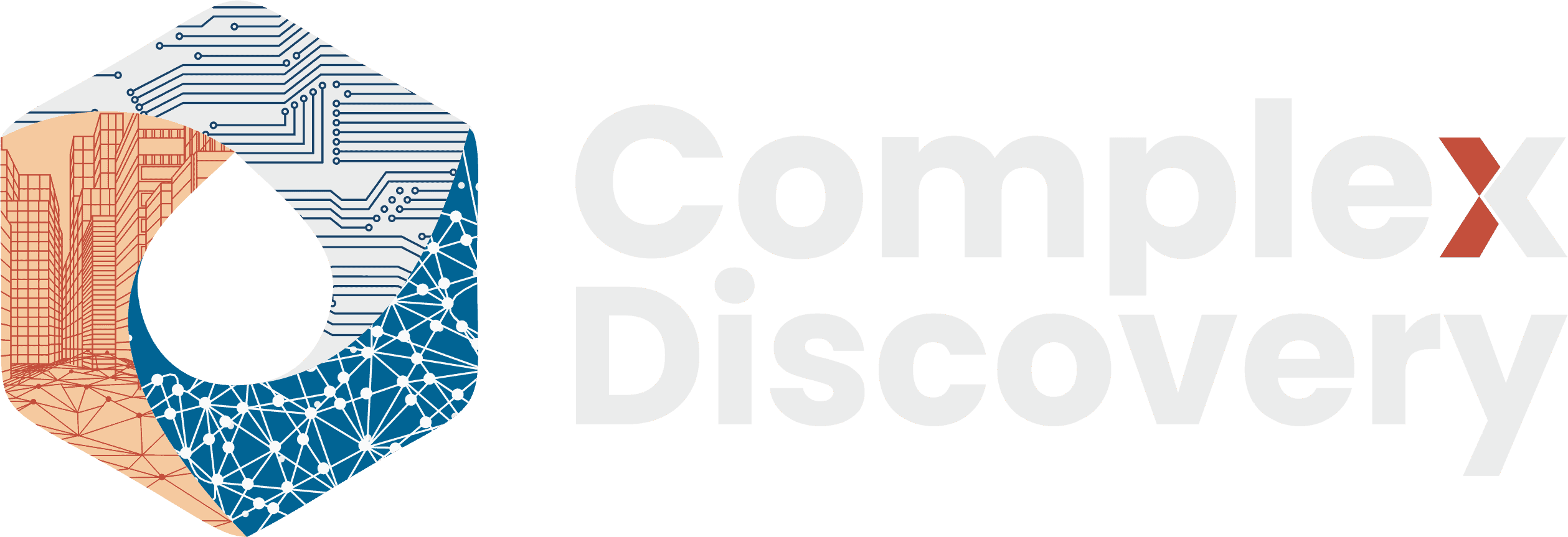Editor’s Note: Processing electronically stored information (ESI) is no longer a back-office utility in the eDiscovery workflow—it’s a strategic pivot point that defines both risk and readiness. In this data-rich update from ComplexDiscovery OÜ, industry professionals gain an in-depth look at the evolving role, cost dynamics, and future trajectory of eDiscovery processing. With insights grounded in the Winter 2025 Pricing Survey and forward-looking projections, this analysis equips legal, compliance, and IT stakeholders with the information they need to optimize processing protocols amid mounting data volumes, regulatory scrutiny, and technical complexity.
Content Assessment: 2025 eDiscovery Processing Update: Tasks, Cost Data, and Spending Patterns
Information - 93%
Insight - 92%
Relevance - 94%
Objectivity - 94%
Authority - 95%
94%
Excellent
A short percentage-based assessment of the qualitative benefit expressed as a percentage of positive reception of the recent article from ComplexDiscovery OÜ titled, "2025 eDiscovery Processing Update: Tasks, Cost Data, and Spending Patterns."
Industry Research – Markets
2025 eDiscovery Processing Update: Tasks, Cost Data, and Spending Patterns
ComplexDiscovery Staff
Within the context of data discovery and legal discovery, the task of processing electronically stored information (ESI) serves as the essential bridge between data collection and review. Processing involves reducing the volume of collected data, organizing it into reviewable formats, and applying quality control procedures. The objective is to transform raw digital material into usable evidence while maintaining accuracy, integrity, and efficiency.
As one of the three primary eDiscovery tasks—alongside collection and review—processing has traditionally represented a stable, though smaller, share of overall spending. In 2012, processing accounted for approximately 19% of total eDiscovery expenditures. As of 2024, it holds steady at 20%, with projections indicating a rise to 24% by 2029, driven by the increasing complexity of data types and legal demands.
Evolution of Processing Costs
The marginal increase in processing’s share of eDiscovery costs masks a more profound evolution in scope and function. What was once a mechanical volume-reduction task has transformed into a strategic inflection point for downstream success. Key contributors to this shift include:
- The proliferation of structured and unstructured data, including social media, chat platforms, and collaborative workspaces.
- The rise of multilingual, multimedia, and encrypted content demands more sophisticated parsing and normalization.
- Legal expectations for auditability and defensibility in every phase of data handling.
Consequently, organizations are investing more in early case assessment (ECA), automated culling, deduplication, and format conversion tools as front-end solutions to streamline the heavier burden of document review.
Technological and Legal Influences
Advances in artificial intelligence (AI), machine learning (ML), and natural language processing (NLP) have significantly elevated the processing function. These technologies enable a deeper contextual understanding of documents, faster filtering of irrelevant information, and early identification of privileged content.
Regulatory regimes such as GDPR, CCPA, and HIPAA have also significantly influenced eDiscovery workflows, introducing requirements for granular metadata handling, defensible chain-of-custody documentation, and jurisdiction-specific redaction protocols. Many of these compliance responsibilities are operationalized during the processing phase, where data is structured, filtered, and prepared for review in accordance with regulatory mandates.
Processing Pricing Data Points: The Cost
The Winter 2025 eDiscovery Pricing Survey from ComplexDiscovery OÜ and the Electronic Discovery Reference Model (EDRM) provides insight into current processing-related costs:
- Per GB cost to process ESI at ingestion: Most commonly cited as under $25.
- Per GB cost to process ESI post-processing: Typically falls below $100, though complex or custom requirements can raise costs.
- Hosting costs (without analytics): Clustered below $10/GB/month.
- Hosting costs (with analytics): Generally below $15/GB/month.
- User license fees: Most respondents reported monthly fees between $50 and $100 per user.
- Project management support: Support ranges from $100 to $200 per hour for basic services, with advanced support, particularly for complex, multi-jurisdictional projects, often exceeding $200 per hour.
This competitive pricing landscape reflects an industry under pressure to deliver both cost-efficiency and technological sophistication.
Market Opportunity: Processing Spend
Spending on eDiscovery processing is forecasted to grow in tandem with rising data volumes and the need for scalable infrastructure. According to ComplexDiscovery’s 2024–2029 Market Size Mashup, total eDiscovery spending is projected to grow from $16.89 billion in 2024 to $25.11 billion by 2029, representing an 8.25% CAGR.
For processing specifically:
- 2024: $3.38 billion (20% of total eDiscovery spend)
- 2029: $6.03 billion (24% of total spend)
This increase reflects broader investments in automation, defensibility, and performance optimization within legal and compliance workflows.
The Processing Journey
Processing stands at a pivotal intersection in the eDiscovery lifecycle. Done well, it accelerates review timelines, reduces downstream costs, and enhances compliance. Done poorly, it can introduce risks ranging from data loss to adverse legal outcomes.
As the market embraces technologies such as AI, GenAI, and cloud-first architectures, processing will continue to evolve into a critical control point in the eDiscovery value chain. Organizations that invest in smart, adaptable processing capabilities will be better positioned to reduce costs, manage complexity, and deliver strategic legal outcomes.
To better understand the evolving role of processing within the eDiscovery lifecycle, the following data highlights key trends in task-level spending and pricing—offering actionable insight into how legal teams, service providers, and corporate stakeholders are adjusting budgets, redefining priorities, and modernizing service delivery to meet increasing demands for efficiency, accuracy, and compliance.
Task Expenditures for eDiscovery
eDiscovery Market Overview by Task
eDiscovery Market By Task (2024-2029)Relative Task Expenditures for Core Discovery Tasks
Relative Task Expenditures for Core eDiscovery Tasks - 2025 Report - UpdateProcessing Pricing Data Points: The Cost
What is the per GB cost to process electronically stored information based on volume at ingestion?
Processing Pricing - Per GB Cost to Process ESI Based on Volume at Ingestion - Winter 2025What is the per GB cost to process electronically stored information based on volume at completion of processing?
Processing Pricing - Per GB Cost to Process ESI Based on Volume at Completion - Winter 2025What is the per GB per month cost to host electronically stored information without analytics?
Processing Pricing - Per GB Cost Per Month to Host ESI without Analytics - Winter 2025What is the per GB per month cost to host electronically stored information with analytics?
Processing Pricing - Per GB Cost Per Month to Host ESI with Analytics - Winter 2025What is the user license fee per month for access to hosted data?
Processing Pricing - User License Fee Per Month for Access to Hosted Data - Winter 2025What is the per hour cost of project management support for eDiscovery?
Processing Pricing - Per Hour Cost of Project Management Support for eDiscovery - Winter 2025As these data points make clear, eDiscovery processing is no longer a background utility or technical afterthought—it has become a pivotal, high-leverage function that directly influences the efficiency, defensibility, and cost-effectiveness of discovery efforts. With processing expenditures increasing in both volume and significance, forward-thinking organizations must take a strategic approach to modernizing their processing workflows. By adopting intelligent automation, aligning protocols with regulatory requirements, and investing in scalable, cloud-first infrastructure, legal and IT teams can transform processing into a powerful catalyst for litigation readiness, operational agility, and long-term compliance success.
News Sources
- 2025 eDiscovery Collection Update: Tasks, Cost Data, and Spending Patterns (ComplexDiscovery)
- ComplexDiscovery OÜ – Winter 2025 eDiscovery Pricing Report: A Market in Transition (ComplexDiscovery)
- Complete Look: ComplexDiscovery’s 2024-2029 eDiscovery Market Size Mashup (ComplexDiscovery)
Assisted by GAI and LLM Technologies
Additional Reading
- Beyond Borders: How Legal Strategy Shapes the Success Trajectory of Tech Startups
- Buyers Guide Archive – ComplexDiscovery
Source: ComplexDiscovery OÜ

























